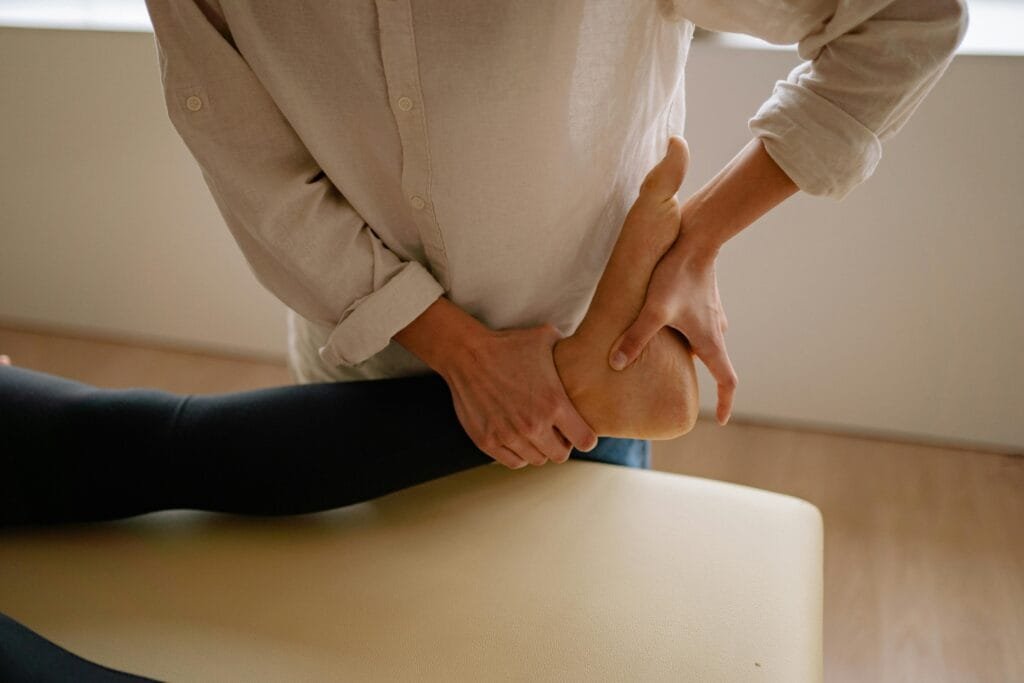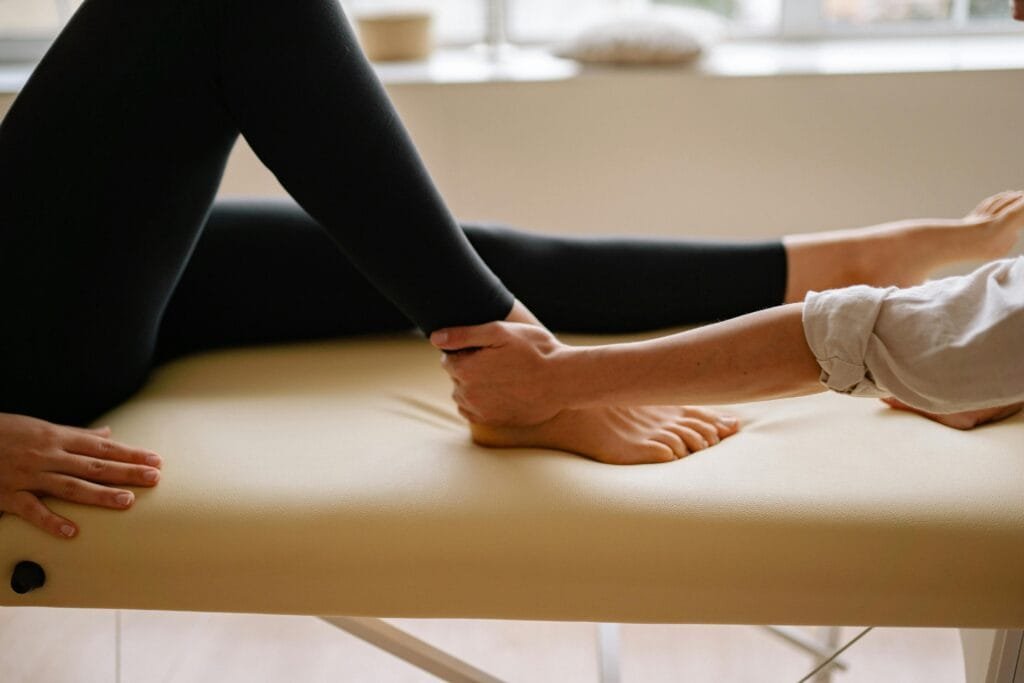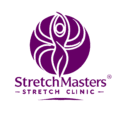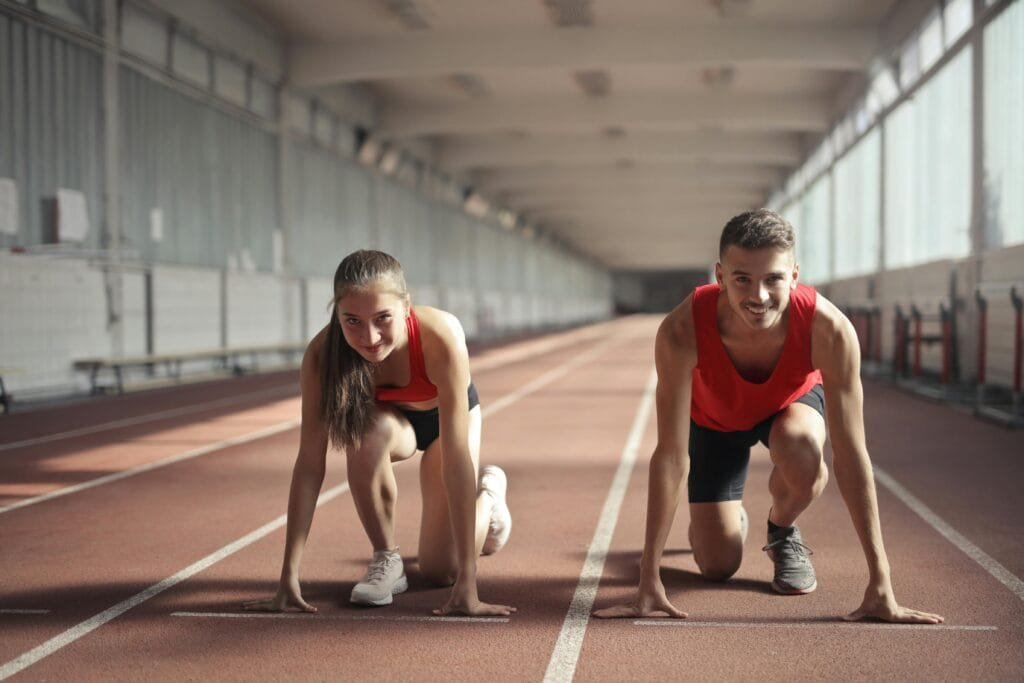You push your body, you train hard, you chase those personal bests. But are you truly giving your muscles the TLC they need to keep performing at their peak, year after year? If you’re serious about your fitness, whether you’re a seasoned pro or a weekend warrior hitting the parks of London or the hills of Scotland, you’ll want to lean in. We’re talking about assisted stretching – not just any old stretch, but a focused, expert-led approach that can unlock a whole new level of athletic potential. It’s the secret weapon many top UK athletes are already using, and it’s time you considered it too.
Table of Contents
ToggleThe Secret Weapon: What Exactly is Assisted Stretching?
You might already be doing your own stretches after a run or a gym session, and that’s commendable. But think of assisted stretching as stretching on steroids, minus any dodgy side effects! Imagine someone, a qualified professional, guiding your limbs through a series of precise stretches, pushing you just beyond what you could comfortably achieve on your own. This isn’t about pain; it’s about precision, controlled force, and getting deeper into those muscle tissues than you ever could solo. It’s a game-changer for flexibility enhancement, muscle elongation, and ultimately, keeping you strong in the game longer.
How Does Assisted Stretching Differ from Regular Stretching?
It’s a fair question, and one I hear all the time. When you stretch on your own, you’re limited by your own strength and your body’s natural protective reflexes. Your muscles have these clever little sensors called muscle spindles. When they detect a rapid stretch, they trigger a “stretch reflex” – basically, telling the muscle to contract to prevent overstretching. This is your body’s way of keeping you safe, but it also limits how deep you can go (Sharman et al., 2006).
Assisted stretching bypasses this “stretch reflex” because an expert is doing the work. They apply slow, controlled force, allowing your muscle spindles to relax. They also leverage another set of sensors, the Golgi tendon organs (GTOs), located in your tendons. When activated by sustained tension (like during an assisted stretch), GTOs send signals that actually inhibit muscle contraction, leading to deeper relaxation and greater lengthening (Sharman et al., 2006). It’s clever biomechanics in action.
Here’s a quick look at the fundamental differences:
Feature | Self-Stretching | Assisted Stretching |
Control | Entirely self-controlled | Controlled by a trained professional |
Depth | Limited by individual flexibility & strength | Deeper, more effective stretches due to external force and precise positioning (bypasses stretch reflex) |
Technique | Often relies on general knowledge | Utilizes specific, targeted techniques (e.g., PNF stretching) informed by anatomical and physiological knowledge |
Muscle Activation | Active muscle engagement | Often passive, allowing for greater muscle relaxation and optimal lengthening |
Feedback | Internal (how it feels) | External (expert guides movement, monitors tension, provides real-time adjustments) |
Efficiency | Can be less efficient for specific goals | Highly efficient for targeting specific muscle groups and improving range of motion rapidly |
Why Every Athlete Needs This in Their Arsenal
So, why are elite athletes, from the Premier League footballers to Olympic rowers, making assisted stretching an important part of their training? It all boils down to unlocking and sustaining peak athletic performance.
Increased Range of Motion (ROM) and Flexibility Enhancement
This is a monumental benefit. The more flexible you are, the greater your range of motion around your joints. For an athlete, this isn’t just about touching your toes; it translates directly to better performance. Think about the fluid power in a rugby player’s tackle, a sprinter’s explosive stride down the track, or a swimmer’s extended reach in the pool. Greater flexibility means smoother, more powerful movements with less restriction, allowing your body to move through its optimal biomechanical pathways (Alter, 2004). This is how you genuinely achieve muscle elasticity improvement.
Injury Prevention: Building a More Resilient Body
Nobody wants to be sidelined, watching from the sidelines while your mates are out there competing. This is where assisted stretching truly shines. By systematically improving flexibility and addressing stubborn muscle imbalances, you’re building a more robust and resilient body, significantly reducing your injury risk.
Consider this: tight muscles are inherently more prone to tears and strains. If your hamstrings are constantly tight from all those runs, a sudden burst of speed during a game places immense stress on those already restricted fibres. The possible result? A pulled hamstring. Assisted stretching, by elongating those muscles, improving joint mobility, and allowing for greater force absorption, drastically reduces that risk (Witvrouw et al., 2004). It’s not just reactive; it’s a proactive investment in overuse injury prevention. It’s about making your body less like a brittle twig and more like a flexible, strong willow branch.
Muscle Recovery: Bouncing Back Faster
After an intense training session or a grueling match, your muscles can feel like they’ve gone ten rounds with a heavyweight champ. They’re often tight, sore, and full of metabolic byproducts. This is where post-workout recovery via assisted stretching becomes invaluable.
By gently lengthening muscles and increasing local circulation, assisted stretching helps to flush out those metabolic waste products (like lactic acid) that contribute to soreness. Simultaneously, it increases blood flow, delivering vital oxygen and nutrients back to the fatigued muscle fibres, accelerating their repair and regeneration (Herbert et al., 2018). This means reduced muscle tension, less muscle soreness relief, and a significantly faster bounce-back time, getting you ready to train harder, sooner. Think of it as hitting the reset button for your muscles, getting them primed for the next challenge.
Proprioceptive Neuromuscular Facilitation (PNF) Stretching: The Gold Standard
You’ve probably heard the term PNF stretching bandied about, and for good reason. It’s one of the most effective and scientifically supported techniques used in assisted stretching, playing a vital role in athletic performance enhancement. PNF involves a clever dance between stretching and contracting the target muscle group (Sharman et al., 2006).
For example, a practitioner might gently stretch your hamstring, then ask you to briefly push against their resistance (contracting your hamstring) for a few seconds, followed by a deeper, passive stretch. This technique effectively “tricks” your nervous system. The contraction phase activates the Golgi tendon organs (those sensors we talked about), which then trigger an inhibitory reflex, allowing the muscle to relax and lengthen even further in the subsequent stretch (Hindle et al., 2012). It’s truly a strategic move for improving athletic longevity.

Diving Deeper: Your Burning Questions Answered
How does assisted stretching improve flexibility and injury prevention for athletes?
It’s a powerful one-two punch. First, by safely guiding your muscles beyond their usual limits, assisted stretching actively increases the functional length of your muscle fibres and enhances the elasticity of surrounding connective tissues like fascia. This directly translates to greater, more usable flexibility. Second, by releasing chronic tension and improving your overall range of motion, your joints gain better support from balanced muscle groups, and your movements become more fluid and efficient. This significantly reduces the likelihood of overstretching, strains, sprains, and other common sports injuries that occur when tissues are forced beyond their current capacity (Jamtvedt et al., 2010). It builds a more resilient body, less prone to breaking down under athletic stress.
Which muscle groups benefit most from assisted stretching in sports training?
Honestly, nearly every muscle group can see significant improvements! However, certain areas in athletes tend to accumulate more tightness due to repetitive movements or high-intensity training.
These often include:
- Hamstrings and Hip Flexors: Absolutely critical for runners, footballers, track athletes, and anyone involved in explosive lower body movements. Their tightness can limit stride length and contribute to lower back pain.
- Glutes and Hip Rotators: Essential for lower body power, stability, and crucial in preventing knee and ankle issues.
- Shoulders and Chest: Key for swimmers, throwers (like javelin or discus), boxers, and anyone with overhead movements or upper body rotational power.
- Calves and Ankles: Important for agility, jumping, landing mechanics, and preventing common issues like Achilles tendinopathy or plantar fasciitis.
What role does PNF stretching play in athletic performance enhancement?
PNF stretching is like the fast track to advanced flexibility and kinetic chain efficiency. As we discussed, its “contract-relax” method leverages your body’s innate neurological responses to achieve greater lengthening. This leads to rapid and significant improvements in range of motion, which directly translates to more powerful, efficient, and precise movements on the pitch, court, or track. Imagine a gymnast needing that extra inch of flexibility for a perfect split, or a martial artist needing a higher kick. PNF can help unlock that. It also enhances proprioception (your body’s nuanced awareness of its position in space), which is vital for complex athletic movements, coordination, and injury avoidance.
Why do elite athletes regularly perform assisted stretching to extend their careers?
It’s all about athletic longevity. Professional sports are incredibly demanding, and the constant physical stress takes its toll. Assisted stretching helps to mitigate this wear and tear by consistently maintaining optimal flexibility, preventing chronic tightness, identifying and correcting developing muscle imbalances, and consistently aiding in efficient muscle recovery. By keeping their bodies supple, adaptable, and resilient, elite athletes can significantly reduce the cumulative stress on their joints, tendons, and soft tissues. This helps push back the onset of age-related stiffness, reduces the risk of career-ending injuries, and allows them to maintain their competitive edge for longer (Behm, 2016). It’s a crucial, non-negotiable investment in their physical capital.
How do professional athletes incorporate assisted stretching into their training routines?
For top-tier athletes, assisted stretching isn’t an afterthought; it’s a structured, often daily, component of their comprehensive training plan. You’ll typically see it integrated in several key ways:
- Post-Training Recovery: Immediately after intense sessions to aid in muscle recovery, reduce stiffness, and promote the removal of waste products.
- Pre-Competition Preparation: Not extensive static stretching of cold muscles, but rather dynamic assisted movements to prime specific muscle groups, achieve peak flexibility, and ensure readiness for performance.
- Injury Rehabilitation: Under the precise guidance of a sports physiotherapist, to regain lost range of motion, reduce scar tissue, and facilitate the safe strengthening of injured areas.
- Maintenance and Longevity: Regular, perhaps weekly or bi-weekly, sessions to proactively maintain optimal flexibility, address any developing muscle imbalances, and prevent future issues that could hinder performance or lead to injury.
They often work with dedicated sports therapists or qualified stretch practitioners, much like the experts you’d find at StretchMasters®, who deeply understand the specific biomechanical demands of their sport.
What are the most effective assisted stretching techniques used by sports therapists?
While PNF stretching is widely regarded as incredibly effective for achieving rapid flexibility gains, therapists employ a range of techniques tailored to individual needs and goals:
- Static Assisted Stretching: Here, the practitioner passively moves a limb to the end of its comfortable range and holds it for an extended period (typically 20-60 seconds) to encourage tissue lengthening.
- Dynamic Assisted Stretching: This involves controlled, rhythmic movements through a full range of motion with assistance, often used to improve mobility and prepare the body for activity.
- Myofascial Release Techniques: Often combined with stretching, these techniques focus on applying sustained pressure and movement to release tension and restrictions in the fascia, the complex web of connective tissue that surrounds muscles and organs. Releasing fascial restrictions can significantly improve underlying muscle flexibility and function.
- Muscle Energy Techniques (METs): These involve active muscle contractions from the client against a carefully applied counterforce from the therapist, followed by a stretch. They’re often used to improve joint movement and lengthen tight muscles.
The key across all these is the expertise of the practitioner, who understands human anatomy, biomechanics, and the specific needs of an athlete’s body, ensuring the techniques are applied safely and effectively.

When Should You Get Stretched? Before or After Exercise?
This is a common question, and the answer isn’t a strict “either/or.” It really depends on your goals for that particular session.
- Before Exercise (as part of a warm-up): For warm-ups, the focus has shifted away from extensive static stretching of cold muscles. Current research suggests that dynamic stretching is more beneficial to prepare muscles for activity (Woods et al., 2007). However, light, targeted dynamic assisted stretching, performed by a professional, can be incredibly valuable to prime specific muscle groups, enhance mobility, and achieve peak readiness for the task ahead. It’s less about elongating cold muscles and more about activating them and making sure your joints can move freely through their full range of motion.
- After Exercise (for recovery): This is where assisted stretching truly shines and provides significant benefits. Post-workout, your muscles are warm, pliable, and much more receptive to lengthening. This is the ideal time to focus on deep tissue stretching, improving overall flexibility, reducing accumulated muscle tension, and crucially, promoting that vital blood flow for enhanced circulation and faster recovery (Dupuy et al., 2011). It’s an essential part of winding down and preparing your body for its next challenge.
Are There Risks or Contraindications to Assisted Stretching?
Like any physical therapy, safety is paramount. When performed by a qualified, experienced professional who understands anatomy and physiology, assisted stretching is generally very safe and highly beneficial. However, it’s crucial to be transparent about your health history, as certain conditions do present contraindications where it might not be suitable or requires extreme caution:
- Acute Injuries: If you have a fresh muscle tear, a bone fracture, severe sprain, or significant inflammation, stretching could worsen the injury. It’s critical to allow initial healing.
- Recent Surgery: Especially around the affected joint or muscle. Your surgeon or physiotherapist will provide specific guidance on when it’s safe to begin gentle movement.
- Hypermobility Syndromes: Individuals with naturally excessive joint flexibility (e.g., Ehlers-Danlos Syndrome) may need a highly cautious and tailored approach to avoid overstretching already lax ligaments.
- Osteoporosis: Increased risk of fractures, so highly careful, gentle application is necessary, or it may be contraindicated in severe cases.
- Certain Medical Conditions: Such as deep vein thrombosis (DVT), uncontrolled high blood pressure, or conditions that affect joint stability.
Always have an open conversation with your practitioner about any pre-existing conditions, pain, or discomfort you’re experiencing. A reputable provider will always conduct a thorough initial assessment to ensure your safety and tailor every session specifically to your unique needs and goals.
The Long Game: Athletic Longevity and Peak Performance
Ultimately, assisted stretching isn’t just about feeling good in the short term, though it certainly does that! It’s about making a strategic, long-term investment in your athletic future. By consistently improving your flexibility, range of motion, and muscle recovery, you’re building an incredibly robust foundation for sustained peak performance.
You’re actively reducing the likelihood of those frustrating, niggling injuries that can derail your progress and steal weeks or months from your training calendar. You’re empowering your body to move with greater freedom, more power, and superior efficiency, for years to come. It helps with overall posture improvement, vital for any athlete, and contributes significantly to long-term joint health.
It’s about unlocking your body’s full potential and enjoying your sport without the constant battle against tightness, soreness, and physical limitations. So, if you’re serious about your training, serious about staying injury-free, and serious about getting every ounce of performance out of your amazing body, then expert-assisted stretching isn’t just a luxury – it’s a non-negotiable component of a truly holistic athletic regimen. It’s time to stop leaving gains on the table and start exploring how this targeted approach can genuinely transform your athletic journey.
Conclusion
So, let’s tie this all together. From unlocking superior flexibility and an increased range of motion to acting as a powerful tool for injury prevention and accelerating muscle recovery, assisted stretching offers a profound array of benefits for any athlete. It’s not just about limbering up; it’s about optimising your body’s mechanics, enhancing circulation, reducing muscle tension, and ultimately, extending your athletic longevity. The targeted approach of techniques like PNF stretching, guided by an expert, pushes your body beyond what traditional self-stretching can achieve, fostering muscle elongation and correcting muscle imbalances for unparalleled performance gains.
If you’re ready to take your athletic pursuits to the next level and truly invest in your body’s potential, it’s time to experience the transformative power of expert-assisted stretching. Don’t just stretch; optimise.
Ready to feel the difference and unlock your athletic prime? Why not explore what professional assisted stretching can do for you? Visit StretchMasters® today and discover how you can supercharge your training and recovery!
References
Alter, M. J. (2004). Science of flexibility (3rd ed.). Human Kinetics.
Behm, D. G., Blazevich, A. J., Kay, A. D., & McHugh, M. (2016). Acute effects of muscle stretching on physical performance, range of motion, and injury incidence in healthy active individuals: a systematic review. Applied Physiology, Nutrition, and Metabolism, 41(1), 1–11. https://doi.org/10.1139/apnm-2015-0235
Herbert, R. D., de Noronha, M., & Kamper, S. J. (2011). Stretching to prevent or reduce muscle soreness after exercise. Cochrane Database of Systematic Reviews, (7), CD004577. https://doi.org/10.1002/14651858.CD004577.pub3
Hindle, K. B., Whitcomb, T. J., Briggs, W. O., & Hong, J. (2012). Proprioceptive neuromuscular facilitation (PNF): Its mechanisms and effects on range of motion and muscular function. Journal of Human Kinetics, 31, 105–113. https://pmc.ncbi.nlm.nih.gov/articles/PMC3588663/
Sharman, M. J., Cresswell, A. G., & Riek, R. (2006). Proprioceptive Neuromuscular Facilitation (PNF) Stretching: Mechanisms and Clinical Implications. Sports Medicine, 36(11), 929–939. https://doi.org/10.2165/00007256-200636110-00002
Shrier, I. (2004). Does stretching improve performance? A systematic and critical review of the literature. Clinical Journal of Sport Medicine, 14(5), 267–273. https://doi.org/10.1097/00042752-200409000-00004
Jamtvedt, G., Herbert, R. D., Flottorp, S., Odgaard-Jensen, J., Håvelsrud, K., Barratt, A., … & Oxman, A. D. (2010). A pragmatic randomized trial of stretching before and after physical activity to prevent injury and soreness. British Journal of Sports Medicine, 44(14), 1002–1009. https://doi.org/10.1136/bjsm.2009.062232
Witvrouw, E., Danneels, L., Cambier, P. A., Van Tiggelen, D., & Willems, T. (2004). Stretching and Injury Prevention. Sports Medicine, 34(2), 79–91. https://link.springer.com/article/10.2165/00007256-200434070-00003
Woods, K., Bishop, P., & Jones, E. (2007). Warm-Up and Stretching in the Prevention of Muscular Injury. Sports Medicine, 37(12), 1089–1099. https://doi.org/10.2165/00007256-200737120-00006
Disclaimer:
The content on this blog is provided for general information and wellness purposes only. It should not be considered medical advice, diagnosis, or treatment. StretchMasters® services, including assisted stretching, are intended to support overall wellbeing and are not a substitute for professional healthcare guidance. While reasonable care has been taken in preparing and verifying the information presented in this blog, StretchMasters® makes no claims, representations, or guarantees regarding its completeness, accuracy, or reliability. This content is intended for general informational purposes only and is not a scientific article. Inconsistencies, inaccuracies, or errors — including in paraphrasing and citation — may be present. We strive to ensure that all information is accurate and up to date; however, due to the evolving nature of health research, we cannot guarantee that all content reflects the latest evidence. Additionally, external links shared in blog posts may change, be updated, or become inactive over time without notice. Always consult with a qualified medical professional before starting any new therapy, especially if you have existing health conditions. StretchMasters®, its parent company Skuil Ltd, and affiliated clinics accept no liability for decisions made based on this content. Opinions expressed in individual blog posts are those of the authors and do not necessarily reflect the views or policies of StretchMasters® or its subsidiaries. Any reference to third-party organisations, websites, services, or products is not an endorsement.

